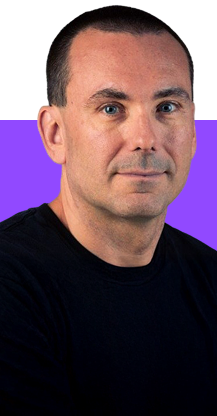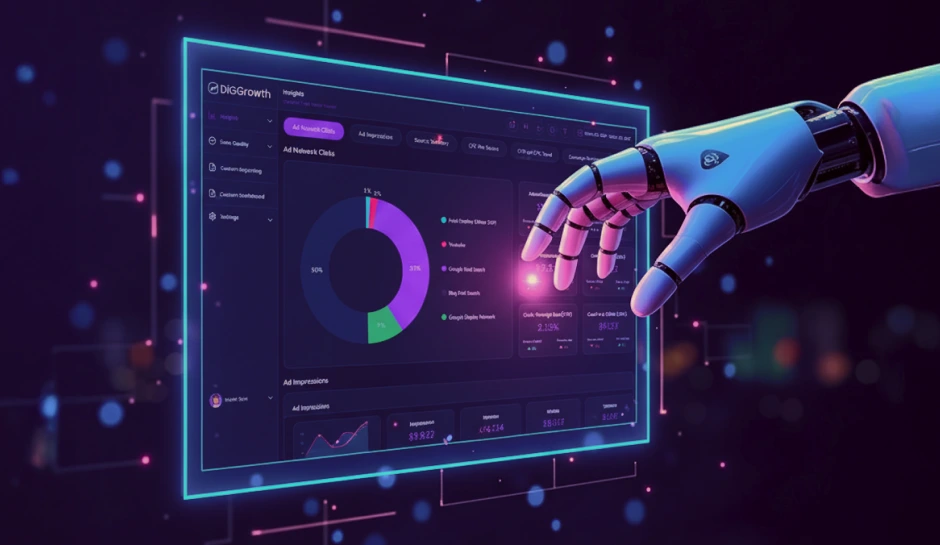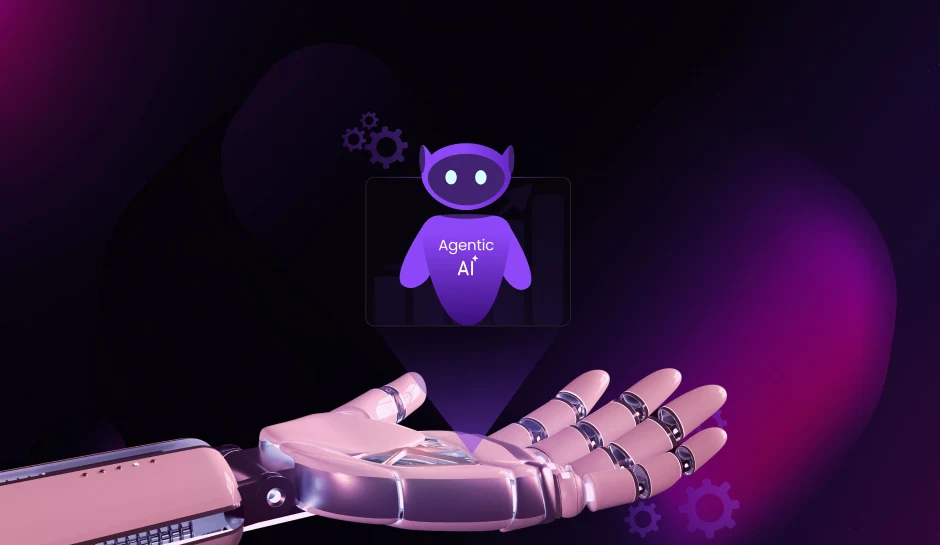In this episode of The Revenue-Focused Marketer, Hershey sits down with Joe Weinlick, seasoned Fractional CMO and Brand Strategist, to unpack the real meaning of branding in today’s AI-driven marketing landscape. Joe challenges the common misconception that branding is just about logos and visual identity, diving deep into why authentic brand storytelling and human connection remain irreplaceable.
From discussing how to effectively measure brand impact beyond vanity metrics to exploring the smart integration of AI tools without losing the human touch, this conversation is packed with actionable insights for marketers navigating the modern landscape. Joe shares real-world examples from his work with companies like Microsoft and Children’s Hospital of Philadelphia, demonstrating how bold, authentic branding strategies can break through the noise.
Whether you’re a startup finding your voice or an established company staying relevant, this episode offers practical frameworks for building meaningful brand connections that drive sustainable growth.
By tuning into this episode, you can expect to come away with an understanding of:
- What brand really means beyond logos and why your company’s “why” is everything
- Smart ways to measure brand effectiveness
- Strategic AI implementation that enhances rather than replaces human creativity
- Why B2B brands should adopt B2C marketing approaches
- The irreplaceable value of human elements in an increasingly automated world
Featured Speakers:-

Joe Weinlick
Fractional CMO | Brand Strategist – WeinlickWorksJoe Weinlick is a Fractional CMO and Brand Strategist who helps family-owned companies and established brands break out of their comfort zones. With experience at major brands like Microsoft and Children's Hospital of Philadelphia, Joe combines traditional brand strategy with modern AI tools while keeping the human element at the core. He believes true potential lies just outside your comfort zone and helps companies achieve clarity and growth through bold, authentic positioning.

Harshika Chadha
Lead Product Manager – DiGGrowthHarshika is a seasoned product manager with a passion for business transformation, design thinking, technology, marketing trends, SaaS security, and human-computer interactions. What interests her most is the intersection of these fields, which is why she stays on top of the latest industry insights to uncover strategies for success in today's dynamic business landscape.
More From Our Content Repertoire:
- The Role of Analytics in Strategic Marketing
- From Cost Center to Profit Driver: Transforming the Perception of Marketing
- How To Become An AI-Ready Organization
Transcript
0:11:
Hello and welcome to another episode of the revenue-focused marketer, where we discuss anything and everything related to marketing as well as data.
0:20:
I’m your usual host, Hershey, and today I’m joined with Joe.
0:24:
Joe, thank you so much for joining us today.
0:27:
Thank you.
0:28:
So Joe has been a seasoned fractional CMO and brand strategist who has helped scale and shape brands across different industries.
0:36:
He’s worked with startups, finding their identities and also larger companies that are kind of looking to stay relevant in the fast changing world here today.
0:45:
So, Joe, let’s kind of start with the basics.
0:49:
And I believe a lot of people kind of get the basics wrong.
0:53:
So when someone says brand, what does that kind of really mean to you?
0:59:
I mean, brand and I guess you’re right, so many people look at brand and they think it’s a logo, it’s a visual identity when that’s really just one interpretation of the brand.
1:08:
Brand is who you are, why you exist, what your values are.
1:12:
So coming up with that brand story is really central.
1:15:
It’s, it’s the, you know, the reason that your company exists and why you do things.
1:20:
So coming up with that message first is critical.
1:23:
, if you don’t know that, then your marketing is going to be generic.
1:26:
And I think a lot of times people also kind of forget their ICPs or their audience really, and they’re not able to really speak to that.
1:36:
So how would you kind of help people set their ICPs as like, you know, one of the stepping stones and ah building their brand?
1:44:
Mhm.
1:45:
I’m a, a huge fan, so if you look at the digital versus old fashioned, I love depth interviews.
1:51:
So, you know, when I go into a client and I’m gonna work on them to develop their brand, part of what I wanna do is, is talk to as many customers, prospects as I can and actually get out there and talk to them one on one.
2:02:
I find that a one on one conversation.
2:04:
I mean, sometimes you’ll do some quant as well.
2:07:
So you can get sort of broad strokes if you’re trying to segment the audience, but to really understand and create that ICP you have to know who that person is.
2:16:
You have to be able to listen to them, ask iterative questions.
2:20:
, and then from that you can start to really put together a persona.
2:24:
So, and I like to think almost more of a persona than an ICT because I want to think who is that person?
2:29:
And it’s more than just data points, right?
2:33:
You want to understand who’s this person?
2:34:
What do they do?
2:35:
What do they do in their free time?
2:36:
How do they consume media and understand the whole person so that you can really create an understanding of not only how to reach them, but emotionally, what are they gonna react to.
2:46:
Definitely.
2:47:
And I think one of the challenges we often hear about is like how do you really measure brand?
2:52:
It’s not as easy as like, you know, this ad got X number of clicks.
2:57:
So how do you really know it’s working?
3:01:
It’s interesting.
3:01:
And I work, working with a lot of small clients like a larger company can, you know, pay for brand studies and really, and, and, , see what the result is.
3:10:
The other aspect is it’s sometimes harder in B2B because in B2C you have a broad audience, but if you’re in a B2B company with a smaller audience, sometimes it’s hard to measure that, that brand lift.
3:21:
, but what I like to do is you, you put certain things into place, right?
3:26:
So you start to track the messaging.
3:28:
So you can say, well, how often, first of all, internally, do your employees use the messaging?
3:32:
Do your clients use the messaging?
3:34:
You know you can have surveys and ask what they think about your company and do they use the right terms.
3:39:
So there are some technical things to see if your brand message is getting out there, are they understanding your value proposition?
3:46:
, but I think a lot of it has to come just from staying consistent and watching the impact, , you know, , a branding can take, you know, 6 months or longer to really start to have an impact, so you have to trend things over time.
4:01:
And see is your messaging working as you’re focusing, are you starting to get More results, whatever those KPIs are, are they starting to grow over time?
4:11:
, and I think effective branding eventually, you know, leads to more effective results and better engagement.
4:18:
Definitely.
4:19:
And I guess crystal ball time, what do you kind of see as the biggest shifts in brand marketing coming up?
4:28:
Well, one of the biggest shifts that’s been going on, and I’m not sure whether it’s completely good or bad, I, I think I’ve been part of it, but, you know, it started probably maybe even two decades ago, everyone started simplifying everything, right?
4:43:
You almost call it the blandification.
4:44:
So now we see logos and it’s like, how simple can you get?
4:48:
, the messages, they just become simpler and simpler and simpler.
4:52:
So I think that’s been one trend, , but it starts to create a challenge, and part of it was driven digitally, right, in a digital world, if you need to have your logo and your messages work on every single device and every single format, you can’t have a lot of complexity to it.
5:07:
But at the same time that can start to make things become generic or everyone starts to look the same.
5:12:
So I think that’s a challenge in terms of where it’s headed.
5:16:
, I hope that there’s an aspect of humanity, , getting back into it.
5:20:
What I see, and I, I think if you go out and LinkedIn is a good example, you know, you scroll your wall and you can tell that so many of the posts were generated by AI.
5:29:
They have the same format, the same cadence, they seem the same.
5:33:
And so that’s obviously a trend of more and more companies using AI and even using AI to automate their their lead gen flows.
5:41:
So now you have AI writing follow up messages, right?
5:44:
And that becomes kind of generic.
5:46:
, so I would hope that at some point a trend starts to enter in where we start to say, how do we get the humanity back into that and the companies that stand out are the ones that figure out, , how to do those things in a humane way to use AI but to use it.
6:00:
To support and streamline as opposed to run things.
6:03:
Yeah, no, definitely, ah, you’ve kind of touched upon a big topic here.
6:07:
AI is like the buzzword, you know, lately, and it started with AI.
6:12:
It’s kind of shifting towards agentic AI right now, but I would love to hear your thoughts on like, you know, , how do you think AI is really, , Impacting the industry right now and how can we kind of use it in a better way so we kind of still keep that personalization.
6:31:
Like what are areas where you think using AI is still OK, , to make sure we kind of don’t all sound the same when sending out these messages.
6:42:
Yeah, I think, and, and I’m often surprised when I talk to people how often they just turn to AI and use it.
6:48:
You know, I’ll be in brainstorming sessions and someone will just throw up.
6:51:
Well, here’s what AI said, and I’m like, OK, your brain should always enter into that.
6:55:
I, I mean, I use AI nonstop all day long, but I mean, it’s funny.
7:01:
I kind of look at AI almost as like a, a junior colleague and we get into arguments, right?
7:06:
I’m like, that sucks.
7:07:
Give me something better.
7:09:
I’m actually trying to train, , Chad GTP not to be so nice and it’s not really working because it has this built-in feedback loop where it always says, well, that’s good, but, and I’m like, I don’t want that, you know.
7:21:
, but at the same time, I mean, that’s really, it’s a tool.
7:25:
And I think that’s where people need to understand and, and that’s where branding is huge because all that, like, instead of using a, , generic prompt, right?
7:35:
Oh, I got a list of prompts and now I can do this and this and this, but everyone’s using those same prompts and they’re all out there.
7:41:
But take your brand, take your, your mission, your vision, your values, your tone, your personality, right?
7:47:
Feed that into the AI.
7:49:
Now you’re gonna start getting things that are much more tailored and much more you and you can train AI in that manner.
7:55:
, so I think using the brand to help create your AI content on the one hand is, , has a ton of potential.
8:05:
I mean, as a, as a fractional CMO I mean part of what I do is I go into a company, but I’m saying that for a portion of my time I can be incredibly effective, .
8:14:
AI enables that because there are things, I mean, we were talking about doing, you know, depth, , interviews, doing depth interviews, so I go out and I have hours and hours of one on one interviews I’ve done with people.
8:27:
OK, the old days, you’d have to transcribe that yourself or get a transcription, but the transcription would suck and you’d have to really filter it.
8:35:
And then there’s just hours of filtering through it.
8:38:
So now I can say to AI, first of all, I get a really good transcript back.
8:43:
And then I can say, can you please, , pull out the main quotes, you know, so suddenly AI starts with my sorting.
8:50:
Now where it falls short is and I’ve tried, there are a few tools out there that say they do this, none of them do it well.
8:56:
I tried having it actually come up with the brand themes and the.
8:59:
Different themes and it doesn’t really do that.
9:01:
So to some degree, I still need to get dirty.
9:03:
I still need to get into the data.
9:05:
I still need to read it.
9:06:
I still need to do that, but AI turns a process that maybe would have been a week of work and now I can get it done in a day or two.
9:13:
So I think there’s a real.
9:15:
Power to that and the same thing when it comes to the AI generating content.
9:19:
If I train it and I take everything I’ve learned, and as you build stuff, you start to, then you get a feedback loop right now I could say, well, I’ve written the website.
9:27:
Now I want you to look at the website, which has all the copy the way I wanted it written.
9:31:
And now I want to write a blog post, but use that as as the style that you’re going for.
9:37:
, but at the same time, you always need to have a human there, right?
9:40:
It’s, you know, I enjoy sometimes taking, , content.
9:44:
And having someone review the content and asking them, OK, what do you think I wrote and what do you think I wrote.
9:51:
And, you know, if it gets to the point where they’re thinking my content might have been AI generated and the other one might have been written by me, I know that I’ve done pretty good at training the AI.
10:01:
Yeah, no, that’s such a unique way of like kind of it.
10:05:
I love that you’ve like, you know, kind of training there.
10:09:
Are there any favorites that you kind of have so far just with, , your own personal use?
10:16:
I mean, I use chat GPT a lot just cause, , you know, I find especially for content, I find it’s probably the best plus I have the ability to Train it a little bit more, at least I’ve invested more time in, in having it remember things about me.
10:30:
, I find that, , Grock is better sometimes if I wanna to do data analysis, you know, if I’m taking some or even if, , you know, here’s a bunch of, , surveys that I did, and I want you to lay this out in a tabular format, and here’s what I want you to do and.
10:47:
I have trouble getting chat, , GPT to understand that and do it right, whereas Grok seems to be able to create almost from first draft the type of spreadsheet I’m looking for, , so.
10:58:
And, and data analysis, I think Rock does a great job if I’m trying to analyze a campaign and I just want to dump in, you know.
11:05:
Clicks and impressions and and do some analysis.
11:08:
Yeah, no, definitely.
11:09:
I think about analytics like that’s a huge part of marketing and I think a big shift has been able to kind of been achieved from going to marketing being a cost center like to actually now being like an investment, right, instead of just thinking of it expenses, , a lot of companies have started thinking of it as an investment.
11:33:
And of course, when you are investing your money, you wanna be able to, you know, the ROI and some other metrics.
11:39:
So what are your thoughts on kind of like, you know, , the vanity metrics that are being used by some company versus like really going in and being like more revenue focused, more targeted and data driven in your insights?
11:54:
I mean, I think it takes a combination.
11:56:
The, the challenge, and I’ve, I’ve been in some companies that really chase day to day, the metrics, you know, how did the emails we sent out last night?
12:04:
What happened?
12:04:
Let’s tweak them.
12:06:
And they were just going for, you know, clicks, right?
12:09:
So you’re trying to optimize CPC, but what happens is you’re not building any brand resonance over time.
12:14:
So you need to make sure you have some long.
12:16:
Her metrics that you’re, you’re tracking lifetime value.
12:19:
Do people engage over time or can you successfully generate tons of clicks, but your average, you know, user stays on, you know, fades off over 1 month.
12:29:
So I think it’s, I, I love the ability to get all the metrics, but at the same time, you need to make sure you’re tracking them over time.
12:37:
And as I said, a, a brand, it might take 6 months, right?
12:40:
I can remember.
12:42:
, this was years ago, you know, early days when, , I was running a campaign for Microsoft, and we first started launching these ads and they were just failing.
12:51:
And I wanted to change all the creative, right?
12:53:
I’m like, we are one weekend, you know, we are getting no engagement whatsoever.
12:58:
This is failing.
12:59:
And, , a media buyer said, please give it a little patience, right?
13:03:
And sure enough, it ended up about 2 weeks, things started to turn.
13:07:
So the metrics were absolutely important, but there was also that, .
13:12:
That human aspect of saying, let’s not just keep pivoting our ship based on the metrics today.
13:17:
There has to be some sort of, you know, long term trend of what you’re doing.
13:22:
I’d kind of love to get your thoughts on, are there any upcoming brands that you think are kind of really doing it right when it comes to branding?
13:35:
Ah, you know, it’s funny, I.
13:38:
You know, looking at it, I love what .
13:41:
You know, Death Water is doing, right?
13:43:
This, you know, it’s because the, , the CMO is out there and it’s personal.
13:49:
I mean, one of the things that I tell clients is if you’re gonna play in social media, , it’s not gonna be safe, right?
13:55:
Like, you know, if you want to drive the social media and you want to do it well, you know, you can’t just be putting out the same type of boring posts that people are doing.
14:04:
You have to do something that’s powerful, that’s evocative, and you have to be willing to risk a little bit, .
14:09:
You know, if you want your product out there, you’re going to get good and bad and embrace that.
14:15:
You know, if you get bad reviews, then maybe that accelerates.
14:18:
I mean, as you said, the ICP, that’s the audience you want to care about you.
14:22:
So cultivate that audience, but I think if you can do things that are bold, it kind of requires it to break out and it’s refreshing when a company is unabashedly bold.
14:32:
Yeah.
14:33:
No, definitely.
14:34:
I think that’s a big part of like, you know, kind of helping you stand out because you kind of said it right.
14:40:
There’s a lot of brands that are doing very similar sort of marketing and you kinda, even if I see some of those on my own personal LinkedIn, I’m just like, OK, scroll, you don’t want to kind of focus on them.
14:52:
, But I think, , I guess I’ll ask you what’s one brand trend that you know you would wish would just go away like you don’t wanna see any more of it anymore.
15:08:
, well, I mean, since we’re talking about AI, I would say just Companies using AI to, to post things, you know, that are just clearly AI driven.
15:20:
I mean, it’s, that is, it, it hurts their brand in the long run.
15:24:
If someone’s sending me something generic, I really don’t care to interact with your brand, , or if you’re developing LinkedIn campaign, campaigns where I get just a generic, , , I’m interested, you know, your company’s doing great things, so there, right?
15:40:
Like that does absolutely nothing, and I think getting back to having a unique voice, , is what becomes critical.
15:48:
Mhm And I think a lot of times like I’ve kind of heard this personally from like, you know, people that I’ve talked to, ah, what kind of happens is like they feel like they’re doing everything right.
16:00:
You have your brand set up, you have your customers, your target personas, you’re making your, you know, social media posts, you’re still having human intervention and like, you know, but you still feel like you’re not really being able to, you know, get the leads that you really want.
16:18:
So what do you think can be kind of like the problem there?
16:22:
Like what are aspects that people should focus on beyond just, you know, the go to’s.
16:30:
Yeah, I was saying that if the campaign isn’t resonating, , you know, you just have the typical things.
16:37:
Is it the right audience?
16:39:
, is it the right message?
16:40:
Are you reaching them at the right time in the right place?
16:44:
, you know, and, and one of the things that’s interesting, so, , I had a client that .
16:51:
Held events and they did a lot of digital legion.
16:55:
They also had a radio campaign, right?
16:57:
And the radio campaign from what they looked at had no conversion, whereas the digital had a very high conversion rate, so they said well we’re wasting money on radio.
17:06:
It’s really a matter of if it’s not working, you know, is it the right audience?
17:11:
Is it the right place?
17:12:
Is it the right time, , and is it the right message?
17:16:
And You know, to give an example, sometimes I think companies that become too lead gen focused and they’re like, well, my message isn’t resonating, but are you hitting your audience at multiple times, right?
17:26:
If you’re only using lead gen, maybe you’re not getting that message out there.
17:29:
I had a client that ran events and they did a lot of digital and a lot of email and they did radio.
17:36:
And they said, well, the email and the digital converts really well.
17:39:
Radio does nothing, right?
17:41:
Well, you, it was harder to track.
17:42:
Like people don’t call in from a radio, right?
17:45:
Like, even if you put the phone number, you give the website, it doesn’t work.
17:48:
They go and they connect somewhere else.
17:51:
So they cut the radio and sure enough, digital, you know, started to decline.
17:57:
Because it was out there and that was what was raising it so I think sometimes you also have to look at are you surrounding your customers and don’t overlook traditional when you’re trying to reach people in a digital channel.
18:07:
, I, I worked for a Children’s Hospital of Philadelphia, , and we were rebranding them and we did, , they had the budget to do a cross media study so we were doing television out of home radio and digital and.
18:19:
We found that the the highest percent of increase in both awareness and conversion was on people who saw the out of home campaign and then converted digitally.
18:29:
So they didn’t click on the digital ad right away.
18:32:
They happened to see the, the big evocative right billboards when they were driving around, and then they happen to see the ad and they clicked on it because now it was fresh in their brain.
18:43:
Definitely.
18:44:
That’s such a huge part of like, you know, how different aspects can organically help you in getting that boost that you kind of need.
18:52:
, I do wanna ask, are you more focused on like B2B marketing or are you more focused on B2C?
19:01:
I do both.
19:02:
I mean, right now, , my clients are more in the B2B realm, , although I’ll say that to some degree you treat B2B like B2C, right?
19:11:
Like, you know, I’ve always loved, , you know, say Granger, which, you know, for the ones who get it done.
19:17:
Well, they’re technically B2B, but their advertising is heavily B2C.
19:21:
, you know, GE has come out with campaigns where they talk about, you know, we don’t make this, we’re the people who, you know, are behind it.
19:30:
There’s a So there’s incredible power.
19:32:
You want to treat, , B2B like B2C, reach people in the same way.
19:36:
It’s not all business, they’re humans.
19:38:
You can reach them in a in a human capacity and sometimes there’s value to actually reaching the end user, so trying to reach the person who’s actually consuming the product as opposed to just your client because if you can reach your.
19:53:
Client’s client.
19:54:
Now you’ve got some power, right?
19:56:
Because if your client’s client happens to know who you are and says, hey, they’re a good product, well, now they just, they’re getting it from both ends kind of a push pull strategy.
20:04:
Definitely.
20:05:
And what do you kind of think about like memes or like pop culture references?
20:10:
Do you think that’s a smart move or like slippery when kind of dealing with B2B marketing?
20:16:
I mean, it depends on the brand.
20:18:
It, it depends.
20:19:
Is it correct for you?
20:20:
It has to be on brand, right?
20:22:
I think if you’re a, a very serious brand, I mean, if you’re a financial company, maybe not, you’re doing credit card processing.
20:30:
I don’t know whether memes are the way to go.
20:32:
It could be if you have a unique brand, that could be a way to cut through.
20:36:
But if you’re a, a, a fun brand, I mean, I work for Philly’s Philly’s best steak, right?
20:41:
They make, , cheesesteak, right?
20:44:
Now, That product, I mean, it lives on Instagram and Facebook pages and people love it.
20:51:
So as we’re cultivating our social media strategy, I mean, there could be an aspect of, of different memes or maybe we’re not creating, creating them, but maybe we happen to just be aligning with the influencers out there, you know.
21:04:
The people who do create the memes and, and we kind of partner and align on.
21:09:
Definitely, , that’s amazing.
21:11:
I’m so glad you are able to also share some of the examples of things that you’ve worked upon.
21:17:
So it’s really good to kind of, you know, hear about those references.
21:21:
, I guess what I’m trying to ask next is like, you know, , do you think Design will still matter in the age of AI generated everything and like how important are like, you know, still kind of those aspects that can’t be generated through AI.
21:42:
I, I hope so, you know, and, and, and maybe as someone who writes, you know, it’s like here we are, it’s amazing how good it’s gotten in a short period of time.
21:52:
I mean, You know, what’s, what’s 10 years mean?
21:57:
I mean, I, I don’t know, it’s become so incredible what can be done in a short period of time and I still think though that there’s a role for the creative.
22:06:
Like if I need something created, I’m not going and generating it myself using AI, , and part of that is the same way that I can take the brand and, and train the AI or interact with it because I can write and because I have that, you know, that, .
22:22:
That basis.
22:24:
I think a good artist, you know, the ones I know are using AI, but they’re probably using it in a similar way, right?
22:31:
So.
22:32:
You know, maybe, I mean, sometimes maybe you need a good photo and someone has to take the photo, but then AI can do some incredible things to that photo, right?
22:41:
They can, they can drop out the background, put it in a different background, do all sorts of things, turn it into an illustration.
22:45:
So.
22:46:
I think there’s power there, but I think the creativity of someone on, on knowing what’s good, as well as, I mean, creative is also an aspect of brands.
22:56:
So how do we build that?
22:57:
, so I, I, you know, I think it’s still going to require a creative, but, you know, what’s interesting, I do think the group that probably needs to watch their backs are the developers because Right, like development, you know, developers often are working in tools that have heavy code, heavy debt burden, and the reality of the day, it’s what you want it to look like.
23:22:
So if a designer has the ability to create, say, a website and then get it coded through AI and then you ask what’s the, what’s the developer bringing today, right?
23:34:
How is the developer making that better, .
23:37:
You know, there are times when you’re, you know, I, I’ve had arguments with developers where there’s a design and they’re like, well, that just doesn’t work.
23:44:
And I’m like, well, why?
23:45:
And it’s because the tools you’re using don’t allow that, you know, you’re, you’ve you’ve kind of gone down.
23:50:
I have that like every day in my team so I can definitely relate to that.
23:59:
And it’s, it’s amazing and I mean, it’s it’s just gonna get better and better.
24:02:
I mean, right now, I, I don’t know that right now, I mean, if you have a really good developer, they’re going to create a better website than if a designer just has to have AI do it, but it’s getting there.
24:12:
I mean, it’s, it’s pretty surprising what can be done and there are some companies coming out with .
24:18:
With specific products that are sort of AI generated development that, you know, a, , a designer with a little bit of tech savvy can can pretty quickly build some neat stuff.
24:28:
Definitely.
24:29:
Wow, thank you so much for, you know, sort of dropping so many truths, but also like branding gold.
24:36:
I think this has been an incredible session.
24:38:
I know we’re kind of coming to the end of our time here today.
24:41:
So any final thoughts before, you know, for our listeners here, any final thoughts?
24:48:
I mean, the big one I’ll have is like, let’s just remember we’re all human, love AI, but, you know, branding is about humanity.
24:55:
And in the end of the day, marketing and sales is about humanity and there’s people on both sides of that.
25:00:
So, , you know, just to divert a little bit, but one of the biggest branding opportunities most companies miss is like HR, right?
25:07:
So right now we have HR which talks to a manager, figures out a bunch of bullets of what they want, you know, the person in this job to do, feeds it into AI gets a job description written description written by AI and then .
25:22:
You know, a savvy job seeker takes that job description and has AI write their resume and then the and then HR uses AI to decide which resumes they’re going to look at.
25:32:
I mean, this is, there’s no humanity in that process.
25:35:
The job description should have your company brand.
25:38:
It should be getting out there saying who you are, why should you want to work here?
25:41:
And by the way, what do we want you to bring to the company?
25:44:
So there’s a human aspect.
25:45:
Absolutely use AI in the process, but I think keep that human aspect and keeping it in marketing as well and remembering that at the end of the day, you know, if I post something on LinkedIn, I don’t want 20 comments by bots that some other company has commenting for them.
26:00:
I want a real person I can engage with.
26:02:
Let’s use AI, but let’s remember we’re all human.
26:05:
Yeah, no, that’s a lovely.
26:06:
Thank you so much for sharing that.
26:08:
For anyone looking to elevate their brand or bringing a killer factional CMO, where can they find you?
26:16:
You can find me at wineliworks.com or maybe easier just look me up on LinkedIn and drop me a line.
26:23:
Perfect.
26:24:
Thank you so so much for being with us and sharing all your insights to all our listeners, you know, definitely leave us a review, share your thoughts, and we’ll be back with more wonderful episodes and just sharing more about the revenue focused magic.
26:40:
So until then, stay curious and thank you so much for joining us today.
26:45:
Thank you.
26:46:
I enjoyed it.




